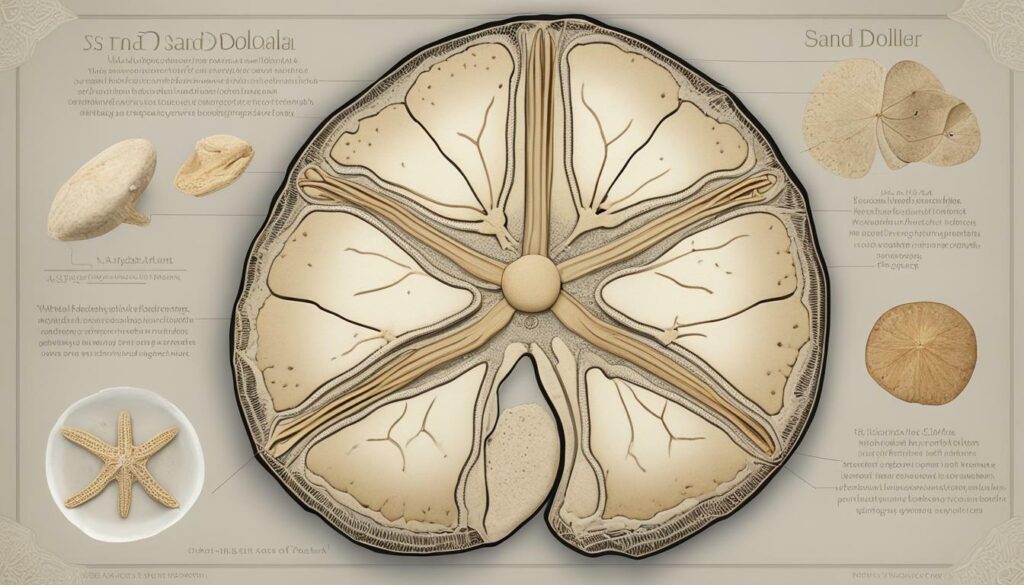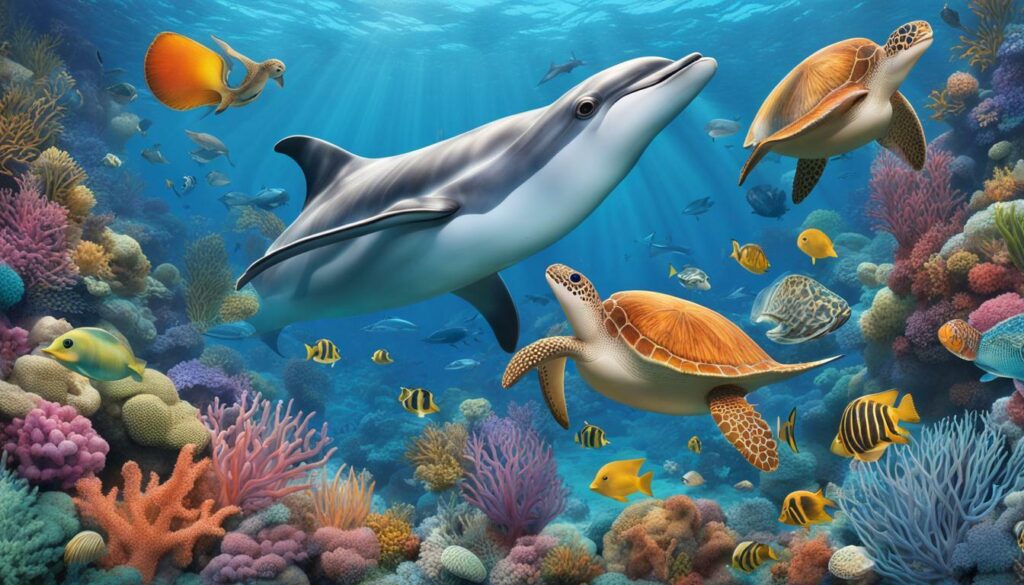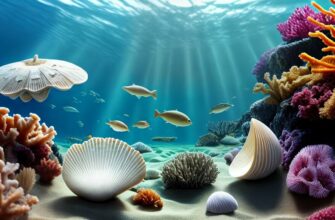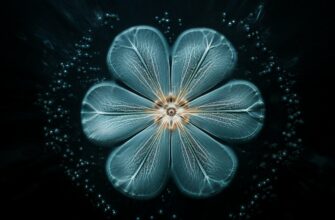Have you ever wondered if sand dollars have brains? These fascinating creatures are often found on sandy beaches and have captivated the attention of many curious minds. In this article, we will explore the biology and anatomy of sand dollars to understand their cognitive abilities, if any. Let’s dive in!
- Key Takeaways:
- Understanding Sand Dollar Anatomy and Biology
- The Nervous System of Sand Dollars
- Unraveling Sand Dollar Intelligence
- The Neural System of Sand Dollars
- Do Marine Animals Have Brains?
- Conclusion
- Final Thoughts
- FAQ
- Q: Do sand dollars have brains?
- Q: What is the anatomy of a sand dollar?
- Q: How does the nervous system of sand dollars work?
- Q: Can sand dollars exhibit intelligence?
- Q: Is there any evidence of brain-like structures in sand dollars?
- Q: Do other marine animals have brains?
Key Takeaways:
- We will explore the question of whether sand dollars have brains
- We will examine the anatomy and biology of sand dollars in detail
Understanding Sand Dollar Anatomy and Biology
Before we can explore the question of whether sand dollars have brains, we need to understand their anatomy and biology. Sand dollars are a type of echinoderm, which is a phylum of marine animals that includes starfish and sea urchins. They have a flattened, disc-shaped body that is covered in spines.
One of the most distinctive features of sand dollars is their “test,” which is the hard, calcified skeleton that protects their internal organs. The test is made up of seven interlocking plates that are arranged in a flower-like pattern. Sand dollars use their spines and tube feet to move along the ocean floor, where they feed on tiny particles of organic matter.
Despite their simple appearance, sand dollars have a complex internal anatomy. They have a system of water-filled canals that are used for respiration, circulation, and movement. These canals are connected to a central ring canal that surrounds the mouth. Sand dollars also have a digestive system that includes a mouth, stomach, and intestines.
While sand dollars do not have a traditional brain like humans do, they do have a decentralized nervous system that is distributed throughout their bodies. This system is made up of a network of nerves and ganglia that control their movements and responses to stimuli.
Understanding the anatomy and biology of sand dollars provides a foundation for exploring their cognitive abilities and potential brain-like structures, which we will delve into in the following sections.
The Nervous System of Sand Dollars
As echinoderms, sand dollars have a unique nervous system that differs from the typical vertebrate brain. Although they lack a distinct brain structure, they possess a decentralized neural system that enables them to respond to various environmental stimuli.
Instead of a centralized brain, the sand dollar’s nervous system is composed of numerous radial nerves that run along its five arms. These nerves connect to a circumoral nerve ring located around the mouth.
Studies have shown that sand dollars can detect light, touch, and even chemicals in their environment. They possess specialized cells known as tube feet that allow them to move and sense changes in their surroundings. Although they lack a conventional brain, these sensory abilities suggest that they have a degree of neural processing and integration.
However, it is still unclear whether sand dollars have the capacity for higher-order thinking, such as problem-solving or decision-making. Further research is necessary to determine the extent of their cognitive abilities.
Compared to other echinoderms, such as sea urchins and starfish, sand dollars have a more complex nervous system. In addition to their radial nerves and circumoral ring, they possess an additional nerve structure known as the axial organ. This structure runs from the mouth to the anus and is responsible for coordinating movement and feeding.
Overall, the nervous system of sand dollars is unique and fascinating. While they may not have a traditional brain, their sensory abilities and neural system demonstrate a remarkable adaptation to their environment.
Unraveling Sand Dollar Intelligence
While sand dollars may not have a traditional brain, research has shown that they do possess some level of cognitive abilities. For example, sand dollars are able to detect light and gravity, and can move in response to these stimuli. They also have a rudimentary nervous system composed of a nerve ring around their mouth and radial nerve cords that extend through their arms.
Studies have suggested that sand dollars are able to learn from their environment and can remember information for up to one month. They are also capable of reacting to changes in their surroundings, such as the presence of predators or the availability of food.
One study conducted by researchers at the University of Washington found that sand dollars were able to associate the scent of food with its location, and were able to navigate towards the source of the scent. This suggests that sand dollars possess some level of intelligence and are not just passive organisms.
It is important to note that the intelligence of sand dollars is relative to their environment and their needs. While they may not possess the level of cognitive abilities found in more complex organisms such as dolphins or primates, they are still able to adapt and survive in their environment.
Overall, while sand dollars do not have a traditional brain, they do possess some level of cognitive abilities and intelligence. Further research is needed to fully understand the extent of their cognitive abilities and how they relate to their behavior and survival.
The Neural System of Sand Dollars
Sand dollars are part of the echinoderm family, which also includes sea stars and sea urchins. These creatures have a complex nervous system that allows them to sense their environment and react to it.
Unlike humans and other vertebrates, echinoderms do not have a centralized brain. Instead, they have a decentralized network of nerves that control their movements and sensory abilities.
Studies have shown that sand dollars have hundreds of small sensory organs, called tube feet, that help them navigate their surroundings. These tube feet are connected to the nervous system and allow the sand dollar to sense light, touch, and chemicals in the water.
While sand dollars may not have a traditional brain, they do have neural structures that allow them to exhibit complex behaviors. For example, researchers have observed sand dollars moving towards areas with higher concentrations of food, indicating that they are capable of some level of decision-making.
In addition, sand dollars have been observed exhibiting a behavior called “self-righting,” where they use their tube feet to flip themselves over when they are turned upside down. This behavior requires coordination and balance, suggesting a level of intelligence and neural processing.
Overall, while sand dollars may not have a centralized brain like humans, they do possess a decentralized neural system that allows them to sense and respond to their environment and exhibit complex behaviors.
Do Marine Animals Have Brains?
When it comes to marine animals and their cognitive abilities, there is a great deal of diversity. Some creatures, such as dolphins and octopuses, are known to possess impressive intelligence and complex neural structures resembling a brain. Others, like jellyfish and sponges, have very simple nervous systems and lack anything that could be considered a brain.
Studies have shown that many marine animals are capable of demonstrating problem-solving abilities, learning, and even tool use. For example, some octopuses have been observed using coconut shells as tools to protect themselves and improve their chances of survival. Similarly, dolphins have been known to work together to solve complex problems in order to obtain food.
However, it is important to note that the cognitive abilities of marine animals are often vastly different from those of their land-dwelling counterparts. This is likely due to the unique challenges of living in a marine environment, such as the need to navigate in three dimensions and communicate underwater.
Overall, while not all marine animals possess a brain in the traditional sense, many are capable of demonstrating impressive cognitive abilities and problem-solving skills. As our understanding of these creatures and their neurological structures continues to grow, we may gain deeper insights into the nature of intelligence and consciousness.
Conclusion
After delving into the biology, anatomy, and neural system of sand dollars, the question remains: do they have brains? While sand dollars do possess a rudimentary nervous system, they lack a centralized brain. Instead, their neural system is decentralized, with a nerve ring around their central disk connecting radial nerves that extend to their limbs.
Despite not having a brain, sand dollars exhibit certain cognitive abilities, including the ability to sense and respond to stimuli in their environment. For example, they can detect the presence of predators and use their spines to bury themselves in the sand to protect themselves.
It is important to note that while sand dollars may not have a brain as we know it, their neural system is still a complex and fascinating system that enables them to thrive in their marine environment.
Final Thoughts
While the question of whether sand dollars have brains may seem straightforward, the answer is more complex than a simple yes or no. By exploring their biology, anatomy, and neural system, we gain a deeper understanding of these fascinating creatures and the diversity of cognitive abilities that exist in the animal kingdom.
Whether we are studying the intelligence of sand dollars, comparing them to other echinoderms, or exploring the broader question of whether marine animals have brains, there is always more to learn about the natural world around us.
FAQ
Q: Do sand dollars have brains?
A: Sand dollars do not have brains in the traditional sense. They belong to a group of marine animals called echinoderms, which typically lack a centralized brain. However, they do possess a complex nervous system that allows them to sense and respond to their environment.
Q: What is the anatomy of a sand dollar?
A: Sand dollars have a unique anatomy. They have a flattened round body covered in tiny spines and possess a central mouth located on the underside of their body. Internally, sand dollars have a system of canals that help with movement and gas exchange.
Q: How does the nervous system of sand dollars work?
A: The nervous system of sand dollars consists of a network of nerves that run throughout their body. While they do not have a central brain, they have sensory cells that allow them to respond to touch, light, and chemical cues in their environment. This decentralized nervous system enables them to navigate and detect potential threats.
Q: Can sand dollars exhibit intelligence?
A: While sand dollars may not possess the same level of intelligence as animals with complex brains, they do display behaviors that indicate a certain level of cognitive abilities. For example, they can react to changes in light and orientation, and some species exhibit burrowing and feeding strategies that require a level of problem-solving.
Q: Is there any evidence of brain-like structures in sand dollars?
A: Studies have shown that sand dollars have specialized structures called radial nerves that resemble some aspects of a brain. These radial nerves connect different parts of the sand dollar’s body and play a role in coordinating movement and sensory information.
Q: Do other marine animals have brains?
A: Yes, many marine animals, such as dolphins, whales, octopuses, and fish, have well-developed brains. The level of complexity and cognitive abilities can vary widely among different marine species. While sand dollars may not have a traditional brain, they are still fascinating creatures that have adapted unique mechanisms to thrive in their environment.














